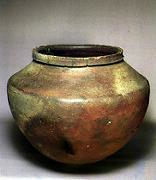Shinagawa from the Muromachi Era to the Age of Civil Wars
During the Muromachi Era, the Shinagawa clan’s territory was transferred to Kamakura-kubo (A chief of Kamakura-fu). Next, the Uesugi clan, a Kanto Kanrei, or assistant to the Kamakura-kubo, controlled the Shinagawa area, followed by the Gohojo clan.
As you can see, influential people of the era controlled Shinagawa. One of the reasons was that it was Edo’s major port. The port at Shinagawa was considered to be at the mouth of the Meguro River.
In addition, the port was a maritime relay point between the Pacific Ocean and Edo Bay to northern Kanto and Tohoku.
Shinagawa flourished as a port town. Many temples were built for the purpose of spreading Buddhism in Kanto. At that time, Prosperous merchants and shipping agents called “Utokunin” donated land and buildings to temples. Most of today’s temples in the north and south of Shinagawa were built during this time.
The foundations of Shinagawa-shuku (Shinagawa Post Station) was completed in the Edo Era.

